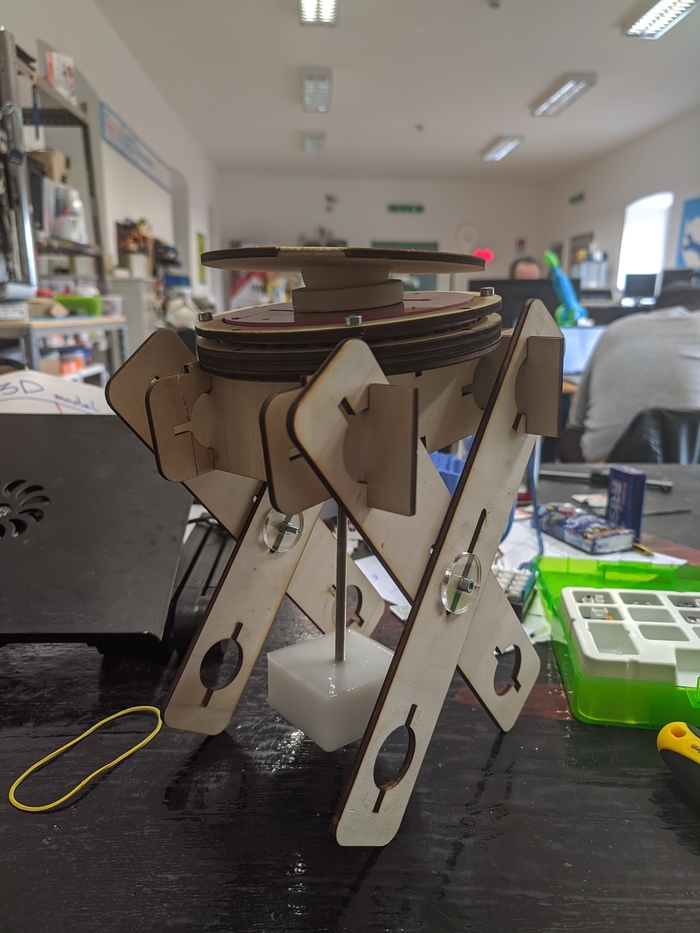Molding and casting¶
Thinking about self-alignment I’ve modelled some kind of gimbal that I would rather name self-leveling. Then, with such design, would it be possible to transmit rotation through friction?
▼ Would this work?
▼ The ball in the cup
Positive mold¶
Creating the mold for the mold (positive) I’ve used high density poliuretanic foam that is pretty hard but could be machined quite fast.
▼ High density foam
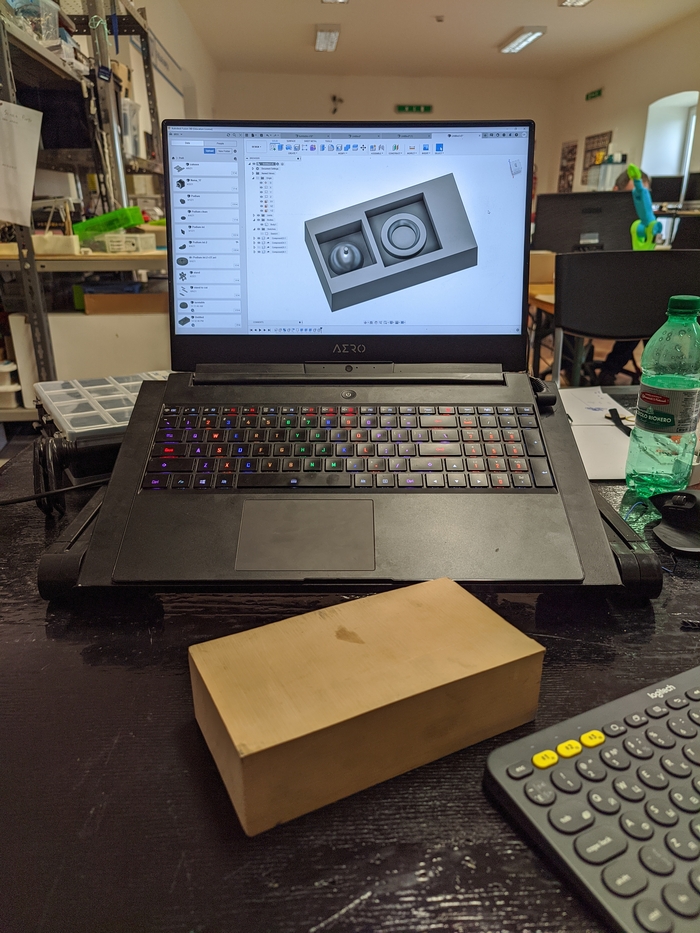
▼ Positive mold
Here is the positive mold that would produce 2 negative molds. One is for the cup and the second for the gizmo ball. The cup would be filled as a separate part and the gizmo sphere would be cast-in-place with metal axis and the platform. The resin would then be filled into the mold through the holes in the platform.
▼ Cast in place
Cutting¶
For machining I’m using Roland MDX-40 and SRP player software for path generation. The rough path done using 6 mm flat bit and the finishing with round-tipped bit.
▼ SRP player
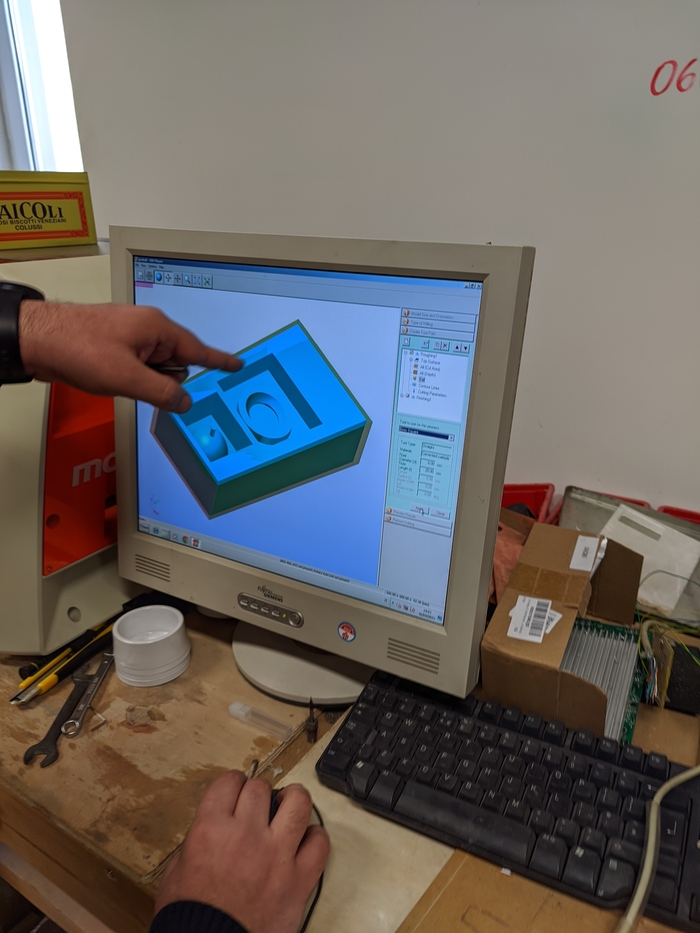
▼ X,Y and Z zeros

Roughing¶
▼ Monitoring the process
▼ After a while…
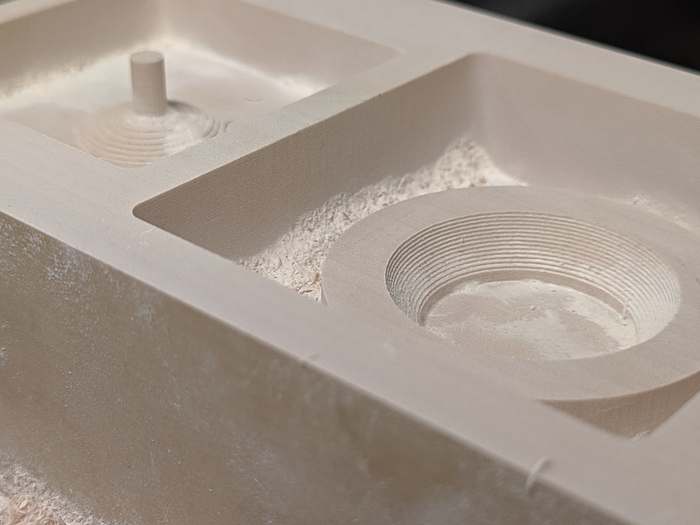
▼ Roughing is done
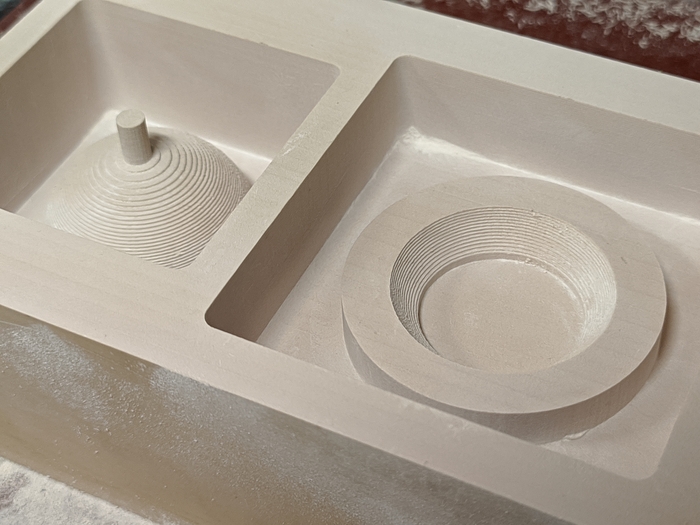
Finishing¶
▼ Finishing with round bit
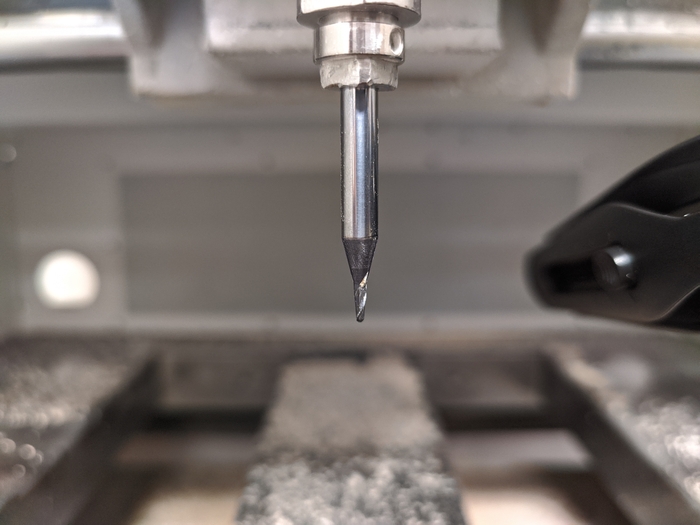
While milling, I’ve heard strange sounds that would correspond to the bit’s movement. Looking into the part while milling I’ve noticed that my bit was slightly colliding with outer edge of the part. I decided not to intervene because this corner is not important and will not influence part performance.
▼ Slight collisions
Here you can hear how the tool is chamfering the piece. This is not by design but it would not affect part performance in any way.
▼ Unplanned chamfer

Finishing second mold I switched bits and using longer bit now.
▼ The sphere
▼ Resulting negative mold

Casting¶
Materials and SDS¶

Materials used for mold making and casting parts sometimes can be hazardous and could make really nasty things to human body. All such materials are supplied wit MSDS (material safety data sheet) which inform user about the risks and precaution measures for working with such substance. I was not able to find SDS from manufacturer for specific materials I’m using but I referenced SDS template and safety data which I found from similar products.
▣ Material safety data sheet template
▼ Mold material components:
R20 silicone rubber for mold making
HAZARDS IDENTIFICATION
GHS Classification
Not a hazardous substance or mixture.
GHS Label element
Not a hazardous substance or mixture.
Precautionary Statements: Prevention:
P271 Use only outdoors or in a well-ventilated area.
Other hazards
None known
CAT R15/20 silicone hardener
Hazard classification:
GHS classification in accordance with 29 CFR 1910.1200
Not a hazardous substance or mixture.
Prevention:
Keep away from heat, sparks, open flames and/or hot surfaces. No smoking.
Keep only in original container.
Storage:
Store in a well-ventilated place.
Other hazards:
May generate flammable hydrogen gas. Avoid contact with water, alcohols, acidic, basic, or oxidizing materials.
▼ Piece material components:
SINTAFOAM base “A” resin component
Physical hazards:
Not Classified
Health hazards:
Acute Tox. 4 - H302 Skin Sens. 1 - H317
Environmental hazards:
Aquatic Chronic 3 - H412
Hazard statements:
H302 Harmful if swallowed.
H317 May cause an allergic skin reaction.
H412 Harmful to aquatic life with long lasting effects.
SINTAFOAM catalyst “B” resin component
Physical hazards:
Not Classified
Health hazards:
Acute Tox. 4 - H302 Skin Sens. 1 - H317
Environmental hazards:
Aquatic Chronic 3 - H412
Hazard statements:
H302 Harmful if swallowed.
H317 May cause an allergic skin reaction.
H412 Harmful to aquatic life with long lasting effects.
Casting the molds¶
To create a mold I’m using silicone rubber with 5% mix ratio.
▼ Components
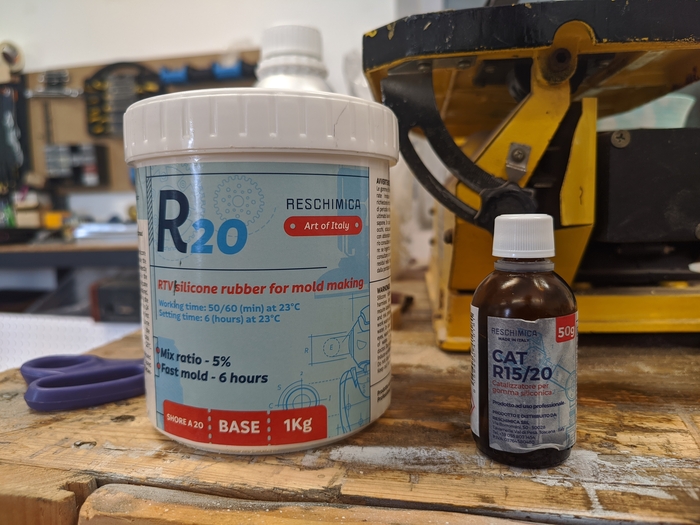
▼ Knocking out the bubbles
▼ Molds
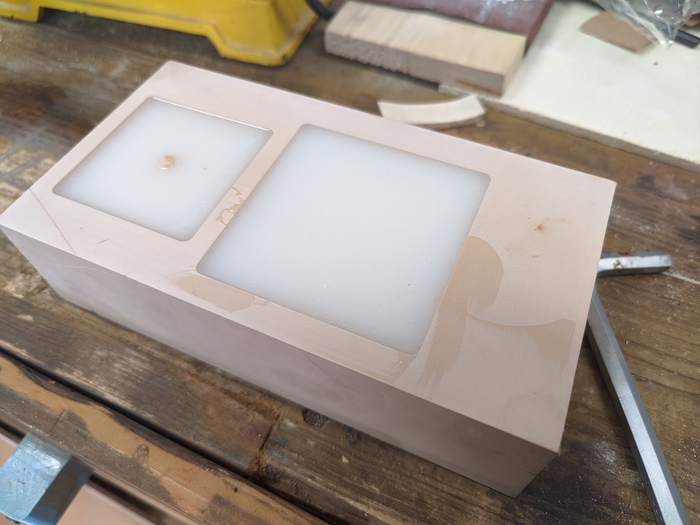
▼ Missed proportions
▼ Goooooo

Here you can observe the result of bad proportions and mixing.
▼ Second attempt
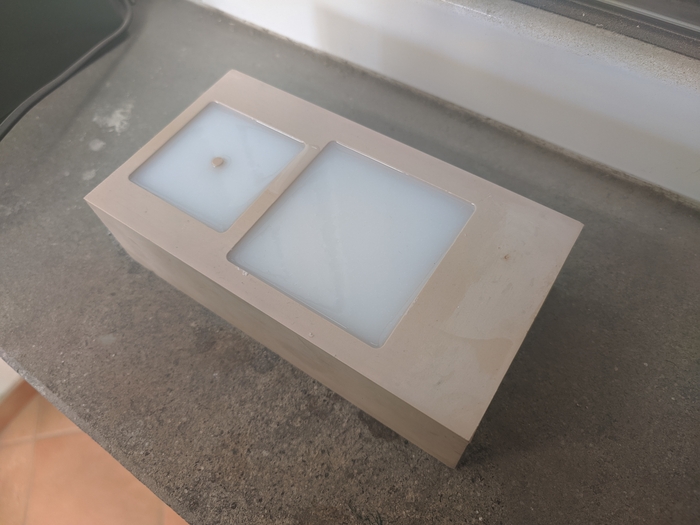
This time it succeed! But what a nuisance, I can’t actually extract the molds from the mold.
While casting I should have been filling the molds all the way to the top in order to be able to extract them. Next pictures are demonstrating bad approach to mold extraction but effective one.
▼ The solution
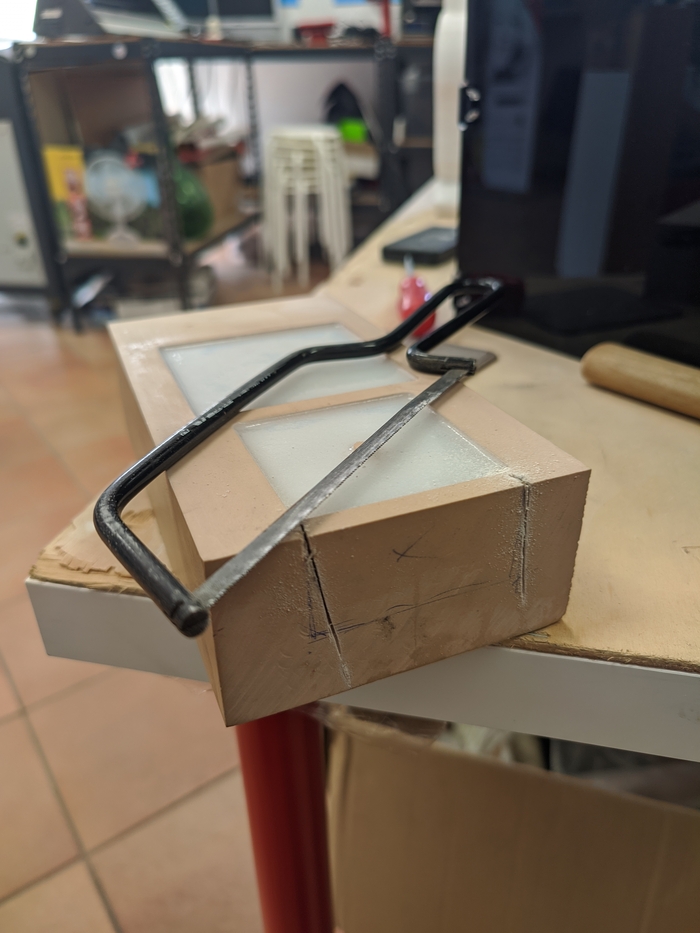
▼ Extracted “sphere” mold
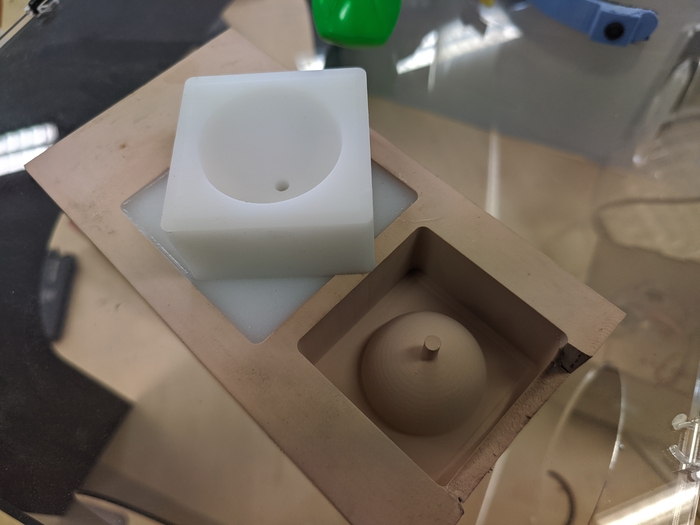
▼ Cracking the boundaries
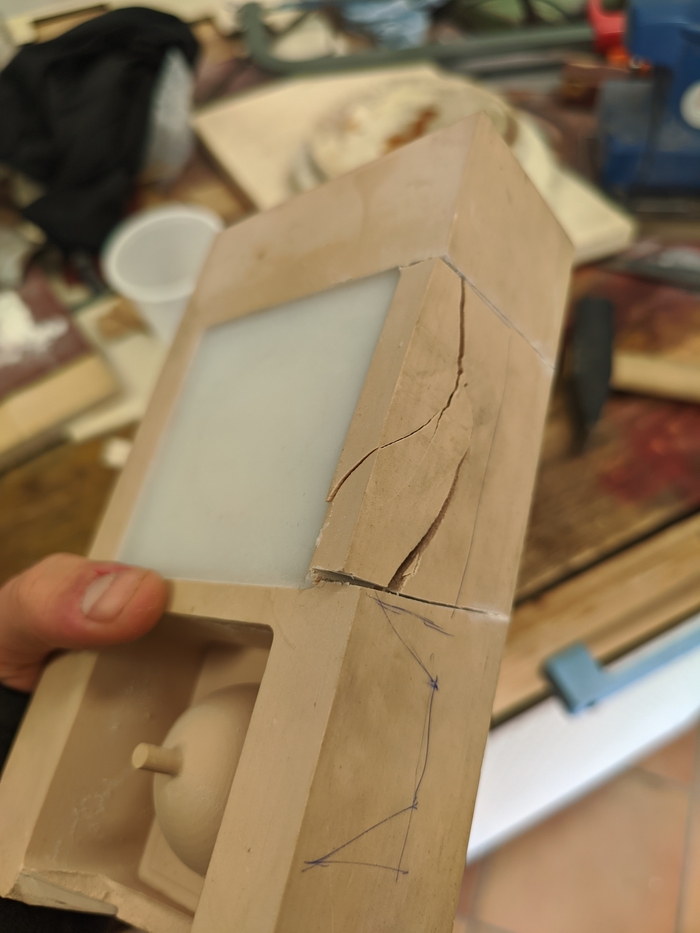
▼ Extracted pieces
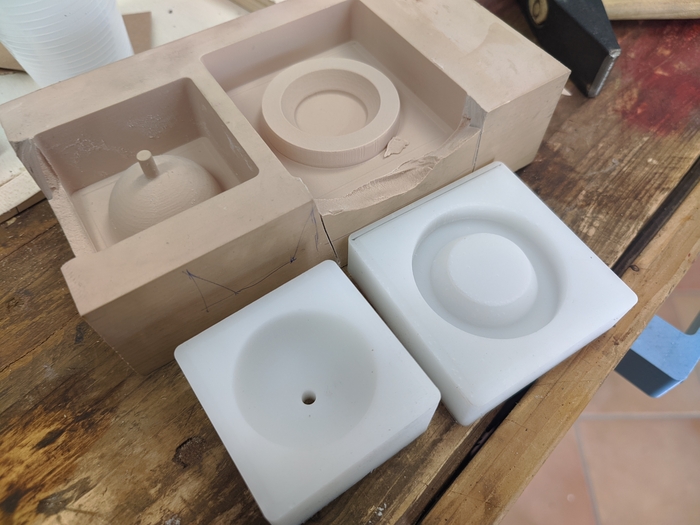
▼ Shiny molds
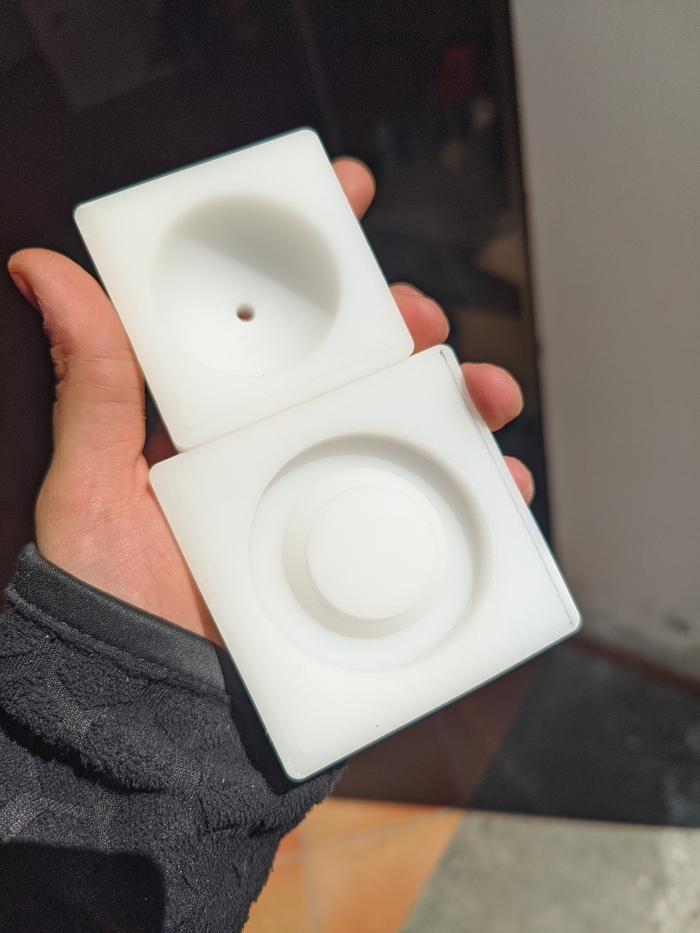
Casting the parts¶
Two molds for two pieces of one ball-joint. First one is half-sphere cast-in-place with platform and metal axis. Second, is the cup-basement for the top platform that holds the sphere allowing free movement by some extents in order to achieve self-leveling.
▼ Cast-in-place
▼ Casting a cup
▼ Spherical joint

▼ Cup

▼ Platform
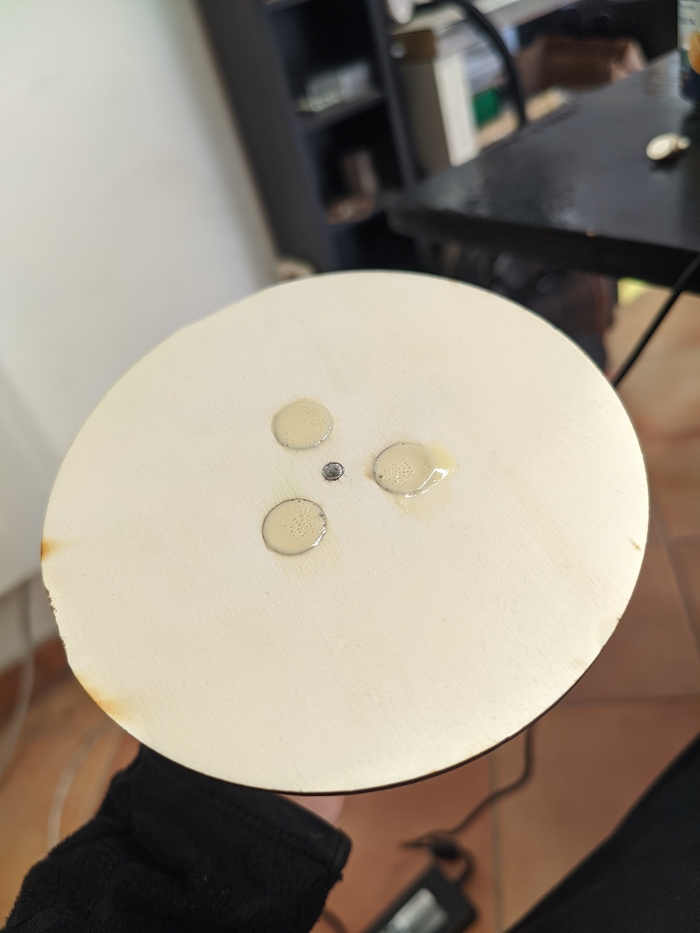
▼ Self-leveling platform
